From 1868 to 2006, Gowings men’s department store was a cornerstone of Sydney city life, a towering 12 storeys built in what was known as “commercial palazzo style” on the intersection of Market and George Streets; last week the investment company Gowing Bros, which has existed in parallel for much of that time, and has survived the iconic suits, trousers, camping-equipment and barbershop business, has become a cornerstone investor in LAVO, an Australian “lifestyle company” developing domestic hydrogen energy-storage technology.
In research partnership with the University of New South Wales’ Hydrogen Energy Research Centre (HERC), LAVO has produced the world’s first residential/commercial hydrogen battery, which stores 40 kWh of energy — that’s three times the capacity of a Tesla Powerwall 2, at 13.5 kWh.
It has the potential to reshape how rooftop solar-generated energy is stashed for use when the sun goes down, or the grid grinds into blackout.
Alan Yu, CEO and Executive Director of LAVO says the system is “the culmination of decades of research”, and the hard work of an ecosystem of design and manufacturing partners, such as engineering and design firm GHD; fuel-cell technologists Nedstack; and Australian industrial design consultancy D+I.
“Having Gowings on board is a huge vote of confidence in the work that we are doing,” said Yu last week.
A streamlined fridge containing four high-tech tinnies
Mid last year, LAVO’s energy storage mechanism — canisters containing a metal hydride that looks like iron filings, but which acts like a sponge for hydrogen — was still being refined in the lab; in early 2021 it is available for use, in an attractively engineered unit.
Prior to its official installation-ready date in June this year, LAVO has orders from ventures such as an eco lodge, and Gowing Bros.
As part of Gowings investment in LAVO, it has committed to purchasing 200 LAVO units, to be deployed on its various commercial properties, such as shopping centres, many of which are already solar enabled, with installations across rooftops and carparks.
“In addition to providing our retail tenants cost savings on energy across Gowings shopping centres, we see a major opportunity to become our own retailer of power at our residential developments through the use of LAVO technology to underpin an embedded network,” said John Gowing, Managing Director of Gowings, in a statement.
The LAVO is about the size of a domestic fridge, with dimensions 1680 x 1240 x 400 mm, and weighing 324 kg.
At installation, it is connected to a solar PV system via a (hybrid) inverter, and to mains water via a purification system, to enable internal electrolysers to convert excess energy into hydrogen, which it stores in four canisters, and oxygen which is vented into the atmosphere.
When stored energy is needed, the LAVO activates a fuel cell to deliver electricity to the residence or business. An integrated 5 kWh lithium battery provides a buffer that can provide instantaneous response to power shortage or outage.
LAVO software partner Evergen, an Australian energy-technology developer, has integrated intelligent monitoring and control software into the system, including a phone app and Wi-Fi connectivity.
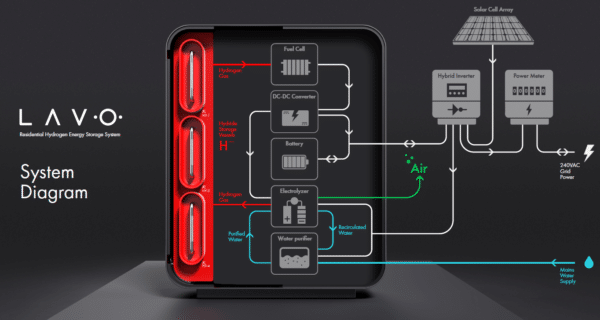
Image: LAVO
Weighing cost, output and environmental benefits
One potential brake on deployment of LAVO in non-grid-connected systems that it is currently limited to 5 kW of maximum continuous power output. A potential resolution for homes or businesses with higher output needs is installation of more than one LAVO system running in parallel to form an intelligent virtual power plant.
Such largesse may in turn be limited by the current cost of a LAVO: the 2021 launch edition, of which the company plans to produce 2,500 units, will cost $34,750.
But prices will reduce as manufacturing ramps up: 5,000 units of the 2022 launch edition are expected to be priced at $29,450 each.
Although the cost of LAVO seems high, it is no greater than an equivalent Tesla home battery stack of three Tesla Powerwall 2 systems at $12,500 each; and it promises far greater longevity than current lithium-ion batteries.
Key components such as the hydride storage technology have an expected lifetime of 30 years, and can deliver more than 20,000 cycles.
At the end of its life, the hydride metal alloy can simply be melted down and reused, which confers significant environmental benefits compared to competitive battery storage technologies.
The ability to remove or swap out LAVO canisters also facilitates using them to power other mechanical or heat-generating systems beyond buildings, such as bicycles or barbecues.
A boost to the vision of a green hydrogen-powered economy
Professor Kondo-Francois Aguey-Zinsou who leads the HERC, and developed the metal-hydride solid-state storage medium in collaboration with LAVO, has said that products such as this hydrogen-based energy storage system are critical to the development of a domestic hydrogen industry.
The hydride material, he says, also has potential applications for exporting hydrogen at a larger scale.
Energy efficiency remains a challenge for all hydrogen based storage systems; much is lost in translation with some 20% of generated solar energy typically lost in translation to hydrogen, and only around 50% of stored energy making it back into circulation.
LAVO claims more than 50% “round-trip efficiency” of conversions, which perhaps just assumes a larger rooftop solar installation than system owners may have planned, and must be weighed against the longevity of LAVO technology, and its environmental upside.
Equity investor and customer John Gowing says, “At Gowings we look for opportunities to invest in something that we believe will offer a more secure future for all our stakeholders and can make a difference in communities.”
The world-first realisation of a residential-scale solar-energy-storage system based on hydrogen, when hydrogen has so far only been deemed viable at mega scale, demonstrates the potential for green hydrogen to become more than a pipe dream — perhaps even a lifestyle choice.
This content is protected by copyright and may not be reused. If you want to cooperate with us and would like to reuse some of our content, please contact: editors@pv-magazine.com.
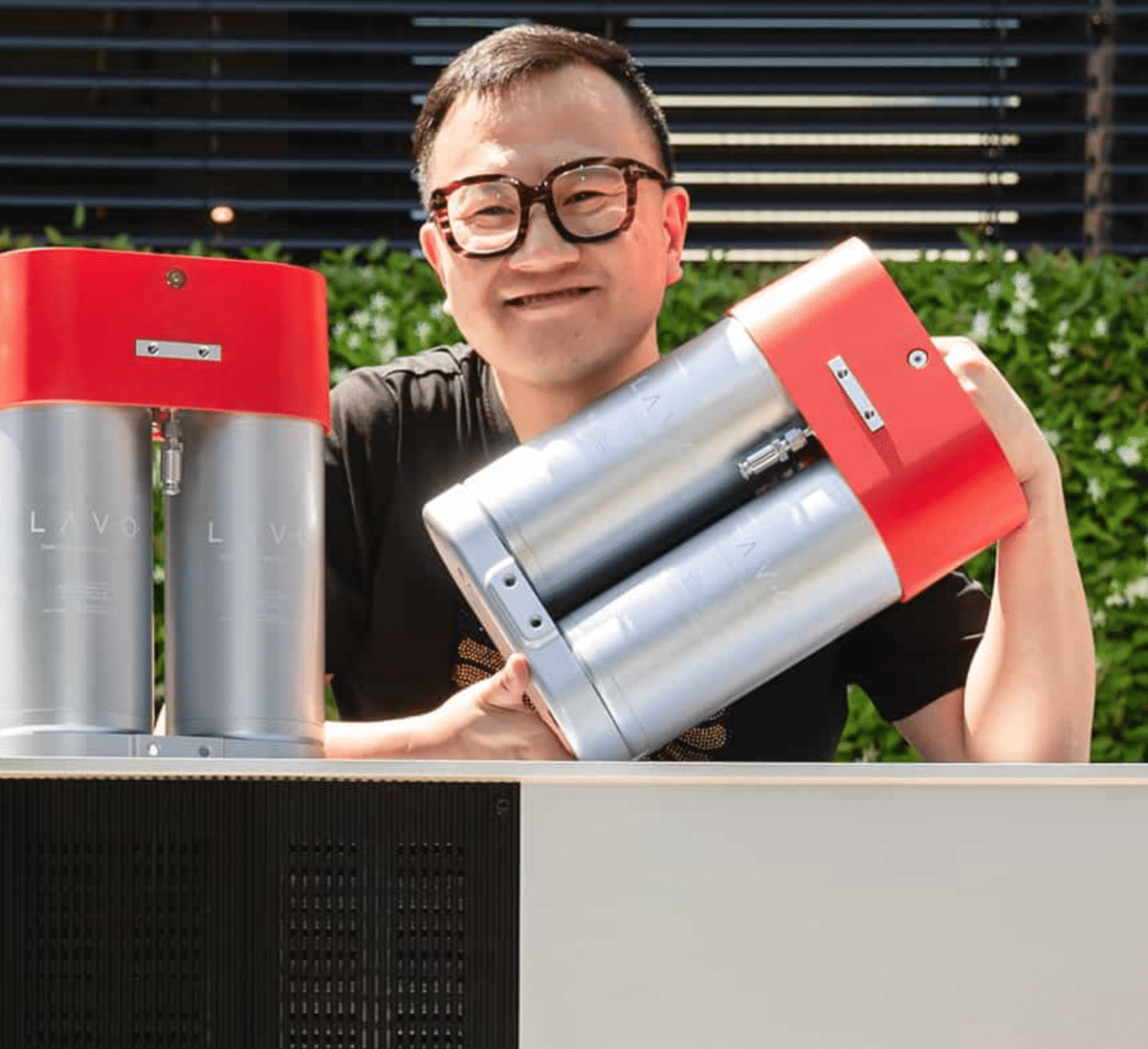
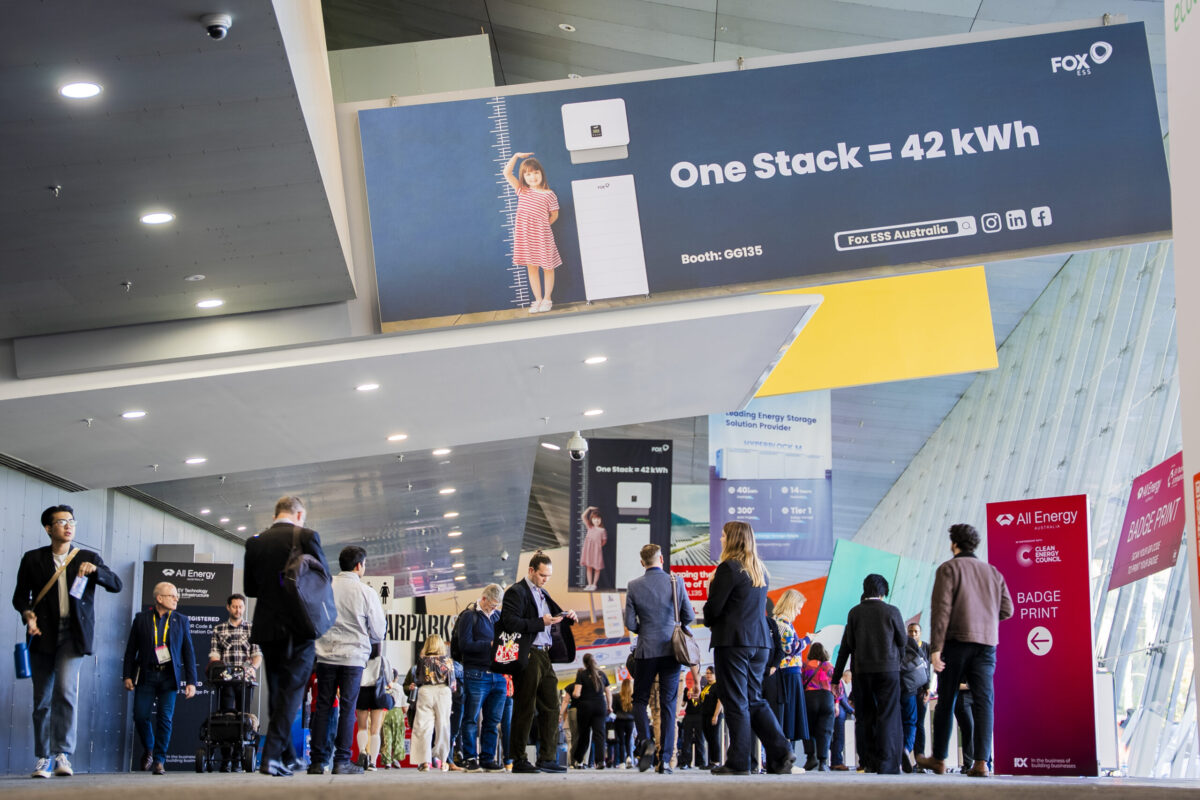


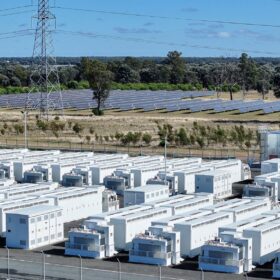

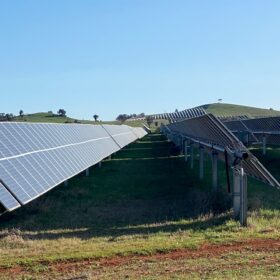
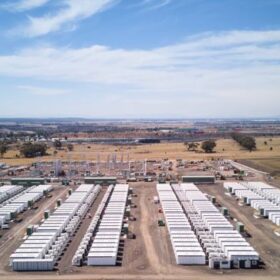
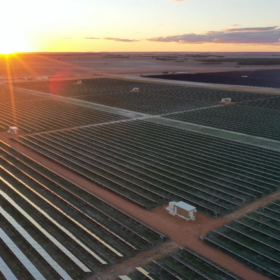
Love the new technology
Want to know more
Fantastic!!!
This is the sort of innovation we need to accelerate the TRANSITION.
One question though, and I accept that the technology is still in its infancy; since it has
“only around 50% of stored energy making it back into circulation”, then in reality the unit
only has 20 kWh of capacity. And then, to be fair, the price comparison made in the document
is not quite correct as being the equivalent of 3 Powerwalls.
Perhaps the net total cost comparison over the lifetime of the product may be even greater than 3 Powerwall batteries. Net cost includes purchase, installation, maintenance and finally disposal at end of life.
Either that or it requires ~80kWh to charge. May make sense when FIT is near zero or negative in the future.
The Warranty terms and conditions will be the thing to wait for. How many cents per kWh delivered will it be in the Warranty period? This will allow better comparison between technologies.
Will this be commercial? The round trip efficiency is only 30-40% compared to 80-90% for a battery. The possibility of being able to use the stored hydrogen in other devices (e.g. car bike) is intriguing, however the stored energy density is probably too low for many uses.
First great Australian invention since the boomerang.
So 3 years later in Oct 2024 what happened? where is it? did they go bust? is it priced down below 22k as they said it would be?
According to LAVO, its all-in-one battery and inverter ‘Life’ system is priced at RRP $19,900 (excluding STC rebate)